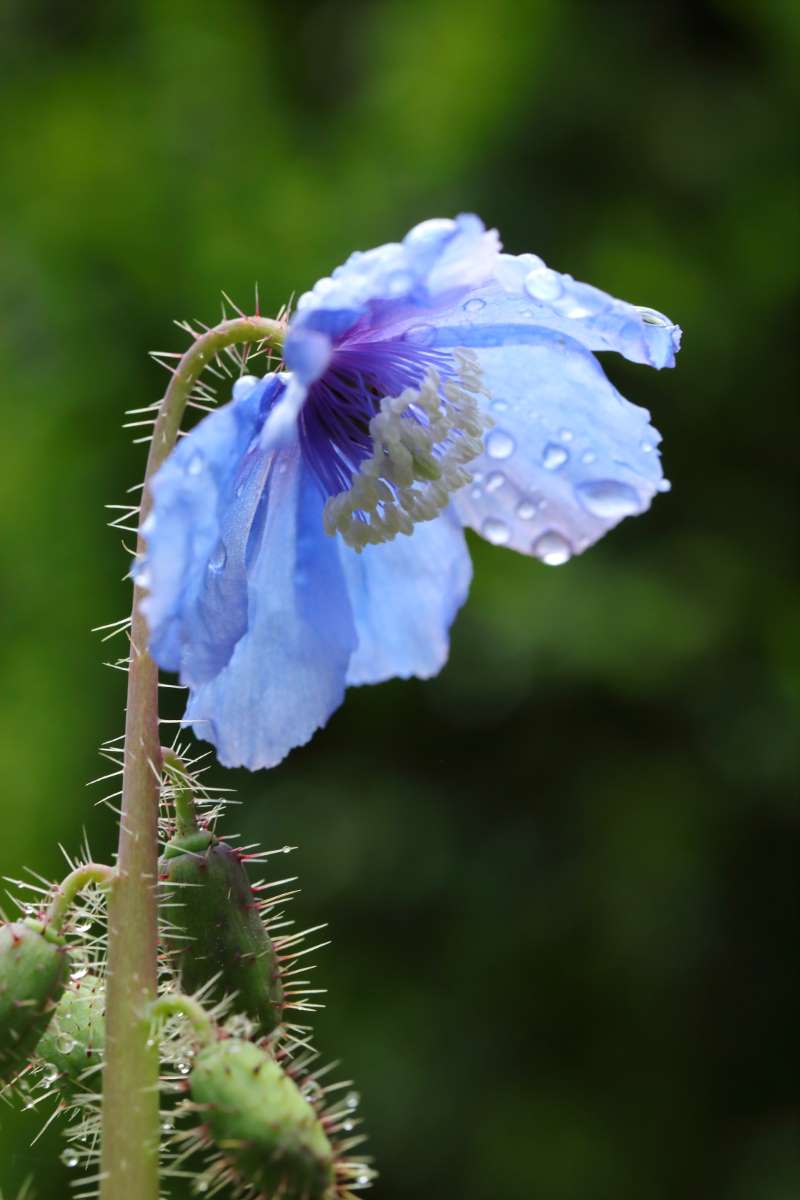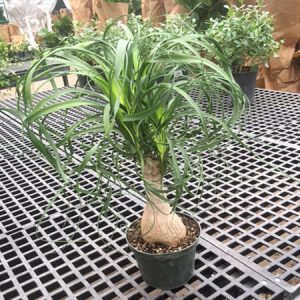Description
Meconopsis –
There are about 45 species of annuals, biennials, and deciduous or evergreen, often short lived or monocarpic perennials in this genus. They occur in moist, shady, mountainous areas, alpine meadows, woodland, scrub, scree, and rocky slopes in the Himalayas, Myanmar, and China, with one species from Western Europe. They are usually hairy or bristly, they produce basal rosettes of pinnate to simple leaves, which may be smooth edged, toothed, lobed, or pinnatisect. The lower leaves are long stalked, the upper ones short stalked or stalkless. The flowering stems, usually one per leaf rosette, are either leafless and unbranched, each bearing a solitary flowers, or leafy and branched near the top, bearing exotic flowers with papery petals held singly or in short racemes or panicles, the top flower opening first. The flowers are generally pendent, saucer to cup shaped, poppy-like, and silky, with a prominent central boss of stamens and usually 4, but sometime up to 9 petals. The flower stalks lengthen after flowering as fruit develop.
Meconopsis grow best in areas with cool, damp summer, and are difficult to grow where summers are long and hot. Most are suitable for growing in large groups in moist, cool woodland garden.
Grow in humus rich, leafy, moist but well drained, lime free, neutral to slightly acidic soil, open enough to prevent stagnation and rot in winter, site in partial shade with shelter from cold, drying winds. Mulch generously, and water in dry spells in summer.
Prone to downy mildew, damping off, and slugs and snails.
T. horridula – This monocarpic, flowers once then dies, deciduous perennial found from Western Nepal to Southeastern Tibet and China grows 8-36″ tall and 18″ wide. It produces loose rosettes of simple, smooth edged, elliptic to narrowly inversely lance shaped, wavy edged, mid to gray green leaves, to 10″ long, covered with yellow to purple spines. From early to mid summer, branched, leafless, spiny stems bear numerous semi pendent, cup shaped, pale to deep blue or reddish blue (rarely white) flowers, 2-3″ across, usually in racemes, on stalks to 6″ long.
Zones 6-8





